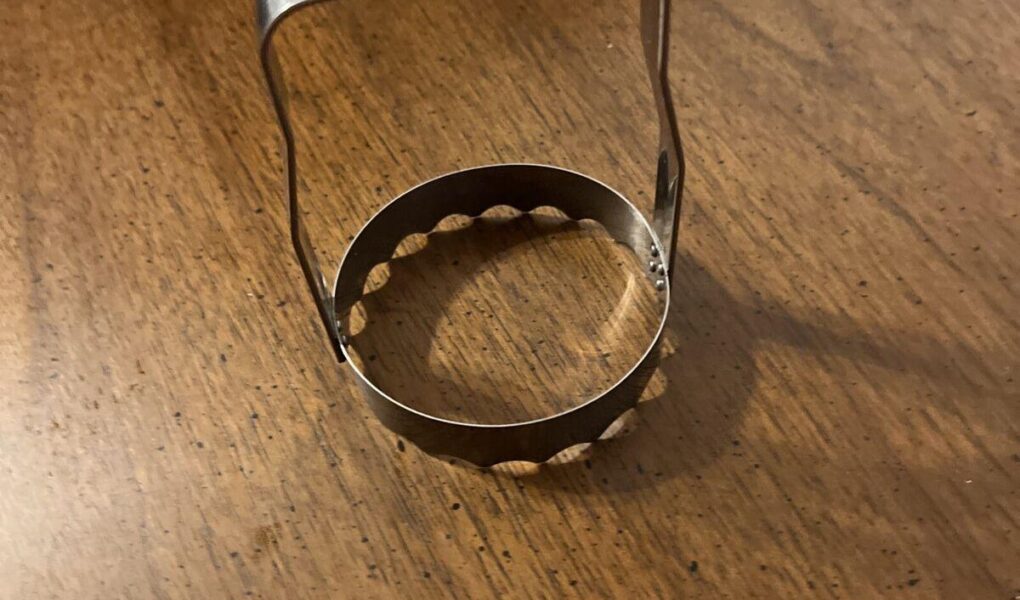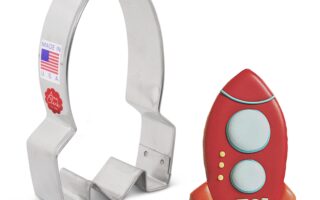Rediscovering the Charm of Antique Biscuit Cutters
In a world that often leans towards the sleek and modern, the humble biscuit cutter stands as a delightful reminder of simpler times. These charming kitchen tools, now considered antiques, tell stories of family gatherings and cherished recipes passed down through generations. Each intricate design, from delicate floral motifs to whimsical shapes, captures the essence of an era when baking was not just a chore but a beloved tradition. As we delve into the fascinating world of antique biscuit cutters, we will explore their history, craftsmanship, and the special role they continue to play in today’s culinary landscape. Whether you’re a seasoned collector or a curious novice, the allure of these vintage tools invites you to appreciate the artistry and nostalgia that comes with every cut of dough. Join us on this journey through time, where each biscuit cutter is a portal to the past, waiting to inspire new baking adventures in the present.
Table of Contents
- Exploring the Vintage Charm of Antique Biscuit Cutters
- Understanding Materials and Craftsmanship in Collectible Biscuit Cutters
- How to Identify Authentic Antique Biscuit Cutters
- Caring for and Displaying Your Antique Biscuit Cutter Collection
- Q&A
- Wrapping Up
Exploring the Vintage Charm of Antique Biscuit Cutters
Stepping into the world of antique biscuit cutters is akin to flipping through the pages of a culinary history book. These charming tools, often crafted from tin, copper, or even wood, showcase a time when baking was both a necessity and an art form. Whether beautifully embossed with intricate patterns or featuring whimsical shapes, each cutter tells a story of its own. As you explore antique shops or estate sales, keep an eye out for unique features such as:
- Designs influenced by regional styles
- Unusual shapes like animals or nature-themed motifs
- Signs of craftsmanship—including hand-hammered details
- Patina that reflects years of baking history
These delightful tools not only elevate the charm of any kitchen but also serve as beautiful decor when not in use. By displaying them in shadow boxes or on open shelves, they become conversation starters that invite stories of nostalgic baking traditions. For a deeper appreciation, consider the following key aspects of biscuit cutter history:
| Era | Materials | Notable Features |
|---|---|---|
| 1800s | Tin, Copper | Simple designs, often utilitarian |
| Early 1900s | Aluminum, Brass | More intricate patterns, collectible designs |
| Mid-1900s | Plastic, Metal | Fun shapes, mass production |
Understanding Materials and Craftsmanship in Collectible Biscuit Cutters
Exploring the intersection of materials and craftsmanship in collectible biscuit cutters reveals the rich history and intricate artistry behind these charming kitchen tools. Antique biscuit cutters are often crafted from a range of materials including tin, brass, and wood. Each of these materials not only impacts the aesthetic appeal of the cutter but also influences its functionality. For instance, tin was widely used in the past for its malleability and ability to hold intricate shapes, while wooden cutters often showcase unique carvings that reflect the artisan’s creativity.
Among the aspects that highlight the craftsmanship of these collectible items are:
- Design Variability: Ranging from simple shapes to intricate figures, the design of biscuit cutters showcases the creativity and technical skill of their makers.
- Manufacturing Techniques: Hand-cut, stamped, or molded processes contribute to the uniqueness of each piece, indicating its origin and era.
- Aging Process: Over time, the subtle patinas and wear on materials tell the story of the cutter’s use and the history it has witnessed.
In terms of value, understanding the quality of materials can be pivotal for collectors. Below is a table highlighting some key materials and their characteristics:
| Material | Characteristics | Examples |
|---|---|---|
| Tin | Lightweight, rust-resistant, often intricately designed. | Early 20th-century cookie cutters. |
| Brass | Durable, offers a vintage appeal with a warm tone. | Victorian-style biscuit shapes. |
| Wood | Rich textures, hand-carved, nostalgic feel. | Traditional German Lebkuchen cutters. |
How to Identify Authentic Antique Biscuit Cutters
Identifying authentic antique biscuit cutters requires a keen eye and an understanding of the unique characteristics that define these charming kitchen relics. One of the first things to examine is the material; genuine antique biscuit cutters were often crafted from tin, copper, or wood. Look for signs of wear or oxidation, as these typically indicate age. Additionally, authentic examples may feature distinctive patterns or embossing, which can be helpful in differentiating them from modern reproductions. When inspecting the details, pay close attention to the edges and joints; handmade items often exhibit slight variations and imperfections that showcase the artisan’s handiwork.
To further assess authenticity, consider the history attached to the biscuit cutter. If possible, seek out documentation or provenance from previous owners, as well as any manufacturer marks. Here are some key points to keep in mind:
- Shape and Design: Unique shapes often correlate with a specific time period.
- Condition: Genuine antiques may show age-related wear, while modern replicas tend to be in pristine condition.
- Craftsmanship: Look for hand-forged elements or irregularities that indicate artisan craftsmanship.
Caring for and Displaying Your Antique Biscuit Cutter Collection
To ensure the longevity and beauty of your antique biscuit cutter collection, proper care is essential. Given their often delicate construction, consider the following maintenance tips to keep them in pristine condition:
- Gentle Cleaning: Use a soft cloth to wipe away dust and grime. If necessary, a mild soap solution can be utilized, but avoid harsh chemicals that may tarnish the metal or degrade wood.
- Protective Storage: Store your cutters in a cool, dry place away from direct sunlight. Using padded containers or display boxes can prevent scratches and damage.
Displaying your vintage biscuit cutters can be an art form in itself. Showcase them creatively by using a variety of methods that highlight their unique designs:
- Wall Displays: Mount shallow shelves or shadow boxes on your walls to create a visually appealing gallery of your collection.
- Table Centerpieces: Arrange your cutters in a decorative bowl or glass cloche to bring a touch of nostalgia to your dining table.
| Display Method | Benefits |
|---|---|
| Wall Displays | Maximizes space and creates visual impact. |
| Table Centerpieces | Adds character to your space and invites conversation. |
Q&A
Q&A: Exploring the World of Antique Biscuit Cutters
Q1: What exactly is an antique biscuit cutter?
A1: An antique biscuit cutter is a historical tool used for shaping dough into biscuits or cookies. Typically crafted from materials like tin, copper, or wood, these cutters come in various designs and shapes, ranging from simple circles to intricate designs like flowers, animals, or seasonal themes.
Q2: How can one identify an antique biscuit cutter?
A2: Identifying an antique biscuit cutter involves examining its age, material, craftsmanship, and design. Look for signs of wear, such as patina or rust, which may indicate age. Additionally, some older cutters may have maker marks or stamps that can help date them. Researching design trends can also provide clues about the era in which the cutter was made.
Q3: What are some common shapes found in antique biscuit cutters?
A3: Antique biscuit cutters come in a wide array of shapes. Common designs include classic rounds, stars, hearts, and seasonal motifs like Christmas trees or pumpkins. Each shape not only serves a practical purpose but also reflects the design aesthetics of its time.
Q4: Are antique biscuit cutters still functional for baking?
A4: Yes, many antique biscuit cutters are still functional! However, before using one, it’s essential to clean it thoroughly, especially if it’s made of metal, to remove any accumulated residue. They can add a charming vintage touch to your baking experience, but be cautious with their structural integrity, as some may be more fragile than modern equivalents.
Q5: What should collectors look for when acquiring antique biscuit cutters?
A5: Collectors should pay attention to the condition, rarity, and aesthetic appeal of antique biscuit cutters. Well-preserved pieces with unique designs or historical significance can be particularly valuable. It’s also helpful to understand the various manufacturers and styles, which can inform a collector’s purchasing decisions.
Q6: How do antique biscuit cutters fit into kitchen decor?
A6: Antique biscuit cutters can serve as delightful decorative elements in the kitchen. Whether displayed in a shadow box, hung on the wall, or showcased on a shelf, they add a touch of nostalgia and charm to any culinary space. They can also inspire stories and conversations about culinary heritage.
Q7: What’s the story behind the popularity of biscuit cutters?
A7: Biscuit cutters became popular in the 19th century when baking became more widespread in households. With the advent of reliable ovens and the rise of domestic baking culture, these tools made it easier to create uniform biscuits for family gatherings and special occasions. Their designs often mirror the patterns of the time, reflecting changing tastes and trends.
Q8: Can you recommend any resources for learning more about antique biscuit cutters?
A8: Absolutely! There are numerous books dedicated to antique kitchenware and baking tools that includes sections on biscuit cutters. Websites and forums focused on antique collecting also provide valuable information. Additionally, joining local antique clubs or attending flea markets can immerse you in the community of fellow enthusiasts and historians eager to share their knowledge.
Q9: Are modern biscuit cutters significantly different from antique ones?
A9: While modern biscuit cutters serve the same basic purpose, they are typically made from more durable materials like plastic or stainless steel and often come in a wider range of shapes and sizes. However, many bakers still appreciate the unique character and artistry of antique cutters, opting to use them for special occasions or as part of their overall kitchen décor.
Q10: What advice would you give someone interested in starting their own collection of antique biscuit cutters?
A10: Start your collection with a clear focus on what appeals to you, whether it’s a specific design, material, or period. Attend antique shows, explore estate sales, and visit local flea markets to find unique pieces. Educate yourself about the history of biscuit cutters and take your time to build a collection that truly resonates with your culinary and aesthetic tastes. Happy hunting!
Wrapping Up
As we conclude our exploration of the charming world of antique biscuit cutters, it becomes clear that these seemingly simple tools are steeped in history and nostalgia. Each intricate design and well-worn handle tells a story of family gatherings, festive baking, and the timeless joy of sharing homemade treats. Whether you’re an avid collector, a culinary enthusiast, or simply someone who admires the artistry of yesteryears, antique biscuit cutters offer a delightful glimpse into the past while enhancing the present.
So, the next time you find yourself rolling out dough, take a moment to appreciate the legacy behind these vintage instruments. With each cut, you’re not only creating delicious morsels but also connecting with generations of bakers who have passed down their love for this sweet tradition. Embrace the hunt for that perfect antique biscuit cutter and let its history inspire your modern kitchen adventures. After all, the heart of baking lies in the melding of old and new, where every cookie carries the essence of countless memories yet to be made.



